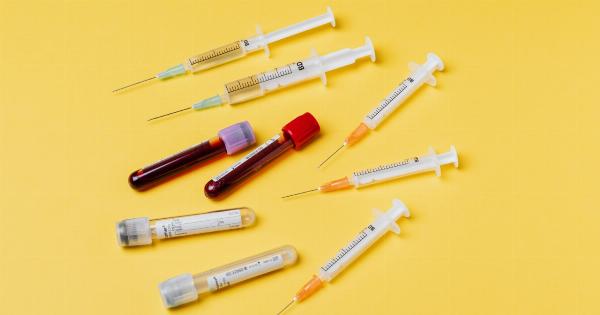Scleroderma is a group of autoimmune diseases that cause the skin and connective tissues to thicken and harden. There are two main types of scleroderma: localized scleroderma and systemic sclerosis.
Localized scleroderma only affects the skin, while systemic sclerosis can affect other internal organs. In this article, we will discuss the different types of scleroderma and how to treat them.
Localized Scleroderma
Localized scleroderma, also known as morphea, only affects the skin and subcutaneous tissue. It is characterized by thick, hard patches on the skin, which may be white or reddish in color. There are two main types of localized scleroderma:.
1. Morphea
Morphea is the most common type of localized scleroderma. It affects adults between the ages of 20 and 50 and is more common in women than men. Morphea can appear on any part of the body, but it is most commonly found on the trunk, arms, and legs.
It can cause itching, pain, and limited movement in the affected area.
2. Linear scleroderma
Linear scleroderma affects children and teenagers. It typically appears as a line or streak on the arm, leg, or forehead. The affected area may become thickened and harden over time. It can cause growth abnormalities in children if it affects a bone.
Treatment for Localized Scleroderma
Localized scleroderma is usually treated with topical medications, such as corticosteroid creams or ointments. These medications can help relieve itching and inflammation.
In severe cases, doctors may recommend oral medications, such as immunosuppressants or methotrexate. Physical therapy and exercise can also help improve mobility in the affected area.
Systemic Sclerosis
Systemic sclerosis, also known as systemic scleroderma, affects the skin as well as other internal organs, such as the lungs, kidneys, and digestive system. It is a rare disease that is more common in women than men.
There are two main types of systemic sclerosis:.
1. Limited cutaneous systemic sclerosis
Limited cutaneous systemic sclerosis, also known as CREST syndrome, affects the skin on the fingers, face, and other areas of the body.
It can cause Raynaud’s phenomenon, a condition in which the fingers and toes turn white and feel numb in response to cold or stress. It can also cause esophageal dysfunction, pulmonary hypertension, and kidney problems.
2. Diffuse cutaneous systemic sclerosis
Diffuse cutaneous systemic sclerosis affects the skin on the hands, arms, legs, and torso. It can cause thickening and hardening of the skin, as well as joint pain and muscle weakness.
It can also affect internal organs, such as the lungs, heart, kidneys, and digestive system.
Treatment for Systemic Sclerosis
Treatment for systemic sclerosis depends on the type and stage of the disease. Medications, such as corticosteroids, immunosuppressants, and medications that dilate blood vessels, can help relieve symptoms and slow the progression of the disease.
Physical therapy and exercise can also help with joint pain and muscle weakness. In severe cases, doctors may recommend surgery, such as lung transplantation or amputation of a finger or toe.
Conclusion
Scleroderma is a group of autoimmune diseases that affect the skin and connective tissues. There are two main types of scleroderma: localized scleroderma, which only affects the skin, and systemic sclerosis, which can affect other internal organs.
Treatment for scleroderma depends on the type and stage of the disease. Topical medications, oral medications, physical therapy, and surgery may be used to relieve symptoms and slow the progression of the disease.



























